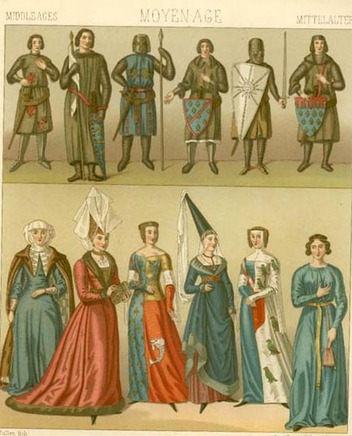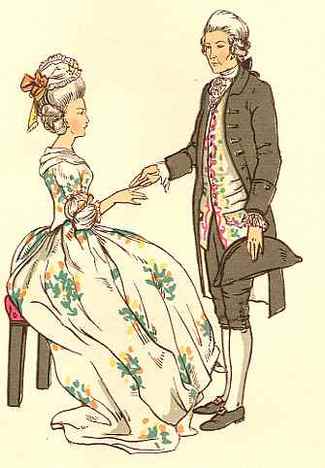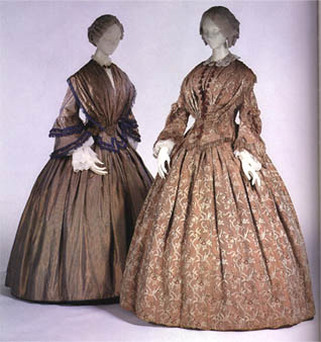Before the 20th century fashion earlier European
fashion had its ups and downs. If it weren’t from the previous years 20th
century wouldn’t have its ideals to change how women see clothes.
15th century

http://www.costumes.org/history/100pages/timelinepages/15thcent1.htm
As early as the 15th century clothing and fashion has been around it had made a remarkable statement, as to some of us might think as boring or to naïve like. Fashion back then was solely based on long sort of like gowns that were heavy and didn’t make a lot of impression. Most of the outfits were so plain that it was mostly plain colored and only the few had embellishments on them. Material that is mostly worn is velvet and the occasional satin. The cotehardie fitted smoothly from the shoulders to the hips and then flared by means of inserted triangular gores. It featured sleeves tight to the elbow with hanging streamers or tippets. The tight fit was achieved with lacing or buttons. (laracorsets)
17th century

Long vertical line gradually superseded the wide, high-waisted look of the previous period. Instead of a bodice and skirt cut separately, the mantua hung from the shoulders to the floor (in the manner of gowns of earlier periods) Clothes were becoming closer to the body meaning tighter clothing and corsets to be used, this time things are more dramatic and dresses became fuller and was harder to do the day to day things with such heavy clothing.
18th century

http://thecolorainbow.wordpress.com/2009/11/04/
18th century or the colonial clothing has started it’s the crazy time for reinventing your self through fashion things start to have embellishments and people start putting patterns, subtle patterns into clothing. Women's clothing styles retained an emphasis toward a conical shape of the torso while the shape of the skirts changed throughout the period. The usual fashion of the years 1750–1780 was a low-necked gown. Women's fashions were starting to be simplified by influences from English women. (marquise)
19th century

http://www.americanrevolution.org/clothing.html
At the beginning of the era woman's gowns developed narrow and sloping shoulders, low and pointed waists, and bell-shaped skirts. Corsets, a knee-length chemise, and layers of flounced petticoats were worn under the gowns. In the second half the skirts became flatter at the front and projected out more behind the woman. Dresses had low necklines and short sleeves, and were worn with short gloves or fingerless lace or crocheted mitts. The last battle of the 19th century fashion came woman's fashion became simpler and less extravagant dresses were not as tight as before. Corsets were still used but became slightly longer, giving women a slight S-curve silhouette. Skirts took on a trumpet shape, fitting closely over the hip with a wasp-waist cut and flaring just above the knee. High necks and puffed sleeves became popular.
